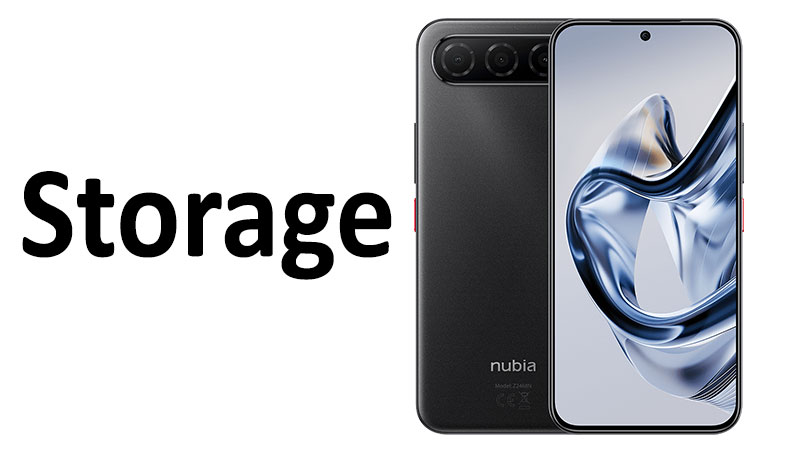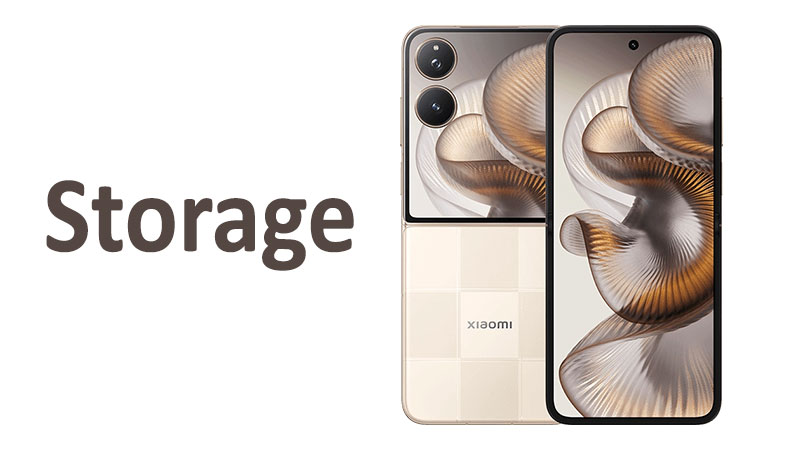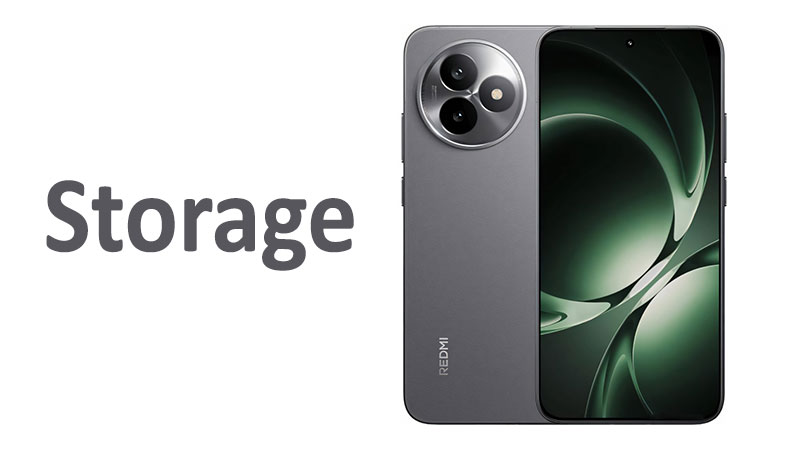The ZTE nubia Air Storage setup is crucial for anyone considering this modern mobile device. Understanding internal memory specifications is vital for a satisfying user experience. This comprehensive guide details the ZTE nubia Air 256GB storage configuration. We will explore the capacity, the type of flash memory used, and provide an essential buyer’s guide. Choosing the right storage means securing your digital life. It directly impacts performance, app loading, and future-proofing your phone. This article aims to inform both technical and general audiences. We ensure you make the most informed purchasing decision.
256GB Storage Capacity: The New Standard
Understanding the 256GB sweet spot
The 256GB storage capacity on the ZTE nubia Air sits in a sweet spot. It offers significantly more space than the base 128GB models. However, it remains more affordable than the high-end 512GB or 1TB options. This capacity is quickly becoming the new industry standard. Most power users now find 128GB limiting. The sheer size of modern apps and high-resolution media demands more space.
For most users, 256GB eliminates “storage anxiety.” This is the common worry about running out of room. You can download extensive game libraries. You can also capture thousands of photos and videos. This size provides a healthy buffer for future growth. Digital consumption habits continue to increase steadily.
What 256GB Holds in Reality
Defining 256GB in practical terms helps buyers visualize the space. It is a large amount of internal memory for a mobile device.
- Apps and Games: You can comfortably install 100 to 150 standard applications. This includes major social media, productivity suites, and streaming services. For large mobile games, 256GB allows for 15 to 25 demanding titles. These games often consume 5GB to 15GB each.
- Photos: Modern smartphone cameras take high-resolution images. A 256GB device can store around 50,000 to 60,000 high-quality photos. This number depends on the file format (JPEG vs. HEIF).
- Video Content: Video is the biggest storage consumer. Shooting 4K video at 60 frames per second uses about 400MB of space per minute. The ZTE nubia Air 256GB model can store approximately 10 to 12 hours of this ultra-high-definition footage. Even if you shoot less video, this capacity is liberating.
Specialized Comparison: 256GB vs. Alternatives
Comparing the 256GB option to other capacities highlights its value.
- 256GB vs. 128GB: The 128GB base model is cheaper upfront. However, it fills up very quickly for users who game or travel often. You spend more time deleting files and managing space. The 256GB model offers double the storage for a modest price increase. It removes the need for constant memory management.
- 256GB vs. 512GB: The 512GB option is best for professional content creators. It suits those who store large amounts of raw video files or professional media. For the average consumer and even most dedicated gamers, 256GB is sufficient. The price jump to 512GB is often significant. This makes the 256GB a superior value proposition.
Storage Type and Technology: Universal Flash Storage (UFS)
The quantity of storage, or capacity, is only half the story. The type of flash memory is equally important. It dictates the speed of your device. The ZTE nubia Air likely utilizes Universal Flash Storage (UFS). This is the industry-leading standard for high-performance smartphones. UFS offers massive improvements over older technologies.
UFS vs. eMMC: The Performance Divide
The storage technology directly impacts the ZTE nubia Air performance. Older phones often used eMMC (embedded MultiMediaCard) memory. Modern premium and mid-range devices like the nubia Air use UFS.
- Read/Write Speeds: UFS is dramatically faster than eMMC. Faster read speeds mean applications launch instantly. Games load maps in seconds instead of minutes. Faster write speeds are crucial for recording high-resolution video. They also speed up large file transfers.
- Simultaneous Operations: UFS allows for simultaneous read and write operations. eMMC could only handle one at a time. This is why UFS is superior for multitasking. You can download an update, install an app, and load a game simultaneously. The phone maintains its responsiveness.
- Power Efficiency: Newer UFS versions are generally more power-efficient. This contributes positively to the overall battery life of the ZTE nubia Air. Better power management is essential for mobile device longevity.
The UFS Generation: 3.1 or 4.0?
The specific UFS generation (e.g., UFS 3.1 or UFS 4.0) makes a difference. Flagship phones now often feature UFS 4.0.
- UFS 3.1: This is the current standard in high-performance mid-range devices. UFS 3.1 offers sequential read speeds exceeding 2,100 MB/s. Write speeds often reach 1,200 MB/s or higher. This level of speed ensures a fluid Android experience.
- UFS 4.0: This is the newest generation. It offers speeds up to double that of UFS 3.1. If the ZTE nubia Air features UFS 4.0, it will deliver cutting-edge speed. App installation and game loading times would be nearly instantaneous. Buyers should check the official specifications for the exact UFS version. Even UFS 3.1 provides outstanding performance.
The memory type ensures the 256GB is not just large, but also quick. A fast internal memory prevents bottlenecks. This is crucial when the processor handles intense tasks.
Detailed Review: Advantages and Disadvantages of 256GB UFS Storage
The combination of the 256GB capacity and fast UFS technology offers many benefits. However, buyers must also consider the potential downsides. This balanced view aids the purchasing decision.
Pros of the ZTE nubia Air Storage Configuration
- Excellent Balance of Cost and Capacity: 256GB provides generous space without the premium cost of 512GB. It offers the best value for money in the storage hierarchy.
- Sustained High Performance: The UFS storage type ensures rapid data transfer. This means faster boot-up times and quicker app switching. This is vital for a smooth user experience.
- Future-Proofing Media: This size accommodates years of high-resolution photos and 4K videos. The user won’t feel pressured to delete precious memories immediately.
- Optimal for Mobile Gaming: Large game files load quickly due to the UFS speed. The 256GB size also allows for multiple large-scale games to be installed concurrently. This caters directly to the mobile gaming community.
- Seamless Cloud Integration: While using cloud storage is popular, downloading files from the cloud remains faster with UFS memory. It streamlines the backup and recovery process.
Cons and Limitations
- No Expandable Storage (Typically): Many modern phones, especially those using UFS, omit a microSD card slot. This is a common industry trend. The 256GB capacity is fixed. If you run out, you must rely on cloud or external physical storage. Buyers need to confirm the presence of a microSD slot. If it is missing, 256GB is the absolute limit.
- Not Enough for Extreme Creators: Professional videographers or users shooting 8K video may still find 256GB limiting. A single day of heavy 8K shooting could potentially fill the memory. These users might need the 512GB model or a dedicated backup strategy.
- Capacity Discrepancy: The usable storage space is always less than 256GB. The operating system, pre-installed apps, and system files occupy significant space. Users can expect about 230-235GB of actual usable storage.
Specialized Comparison: ZTE nubia Air vs. Key Competitors
How does the ZTE nubia Air 256GB storage configuration stack up against rival devices in its class? We look at other smartphones in the performance-focused mid-to-high tier.
- Vs. Competitor A (Budget Focus): Competitor A might offer 256GB but often uses slower UFS 2.2 or even eMMC. The ZTE nubia Air’s faster UFS memory gives it a significant advantage in loading speeds. The nubia Air offers a better performance value.
- Vs. Competitor B (Flagship Focus): Flagship competitors might offer UFS 4.0 and 512GB options. The ZTE nubia Air sacrifices this maximum capacity and speed for a much lower price point. It hits a necessary balance of performance and affordability. Its 256GB UFS setup is powerful enough for 90% of tasks.
- Vs. Previous Nubia Models: Historically, older nubia models may have topped out at 128GB or used a lower UFS version. The current ZTE nubia Air represents an important upgrade. It doubles the base capacity and includes a significantly faster storage controller. This leads to a marked improvement in daily responsiveness.
The Ultimate Buyer’s Guide to ZTE nubia Air Storage
Choosing the right phone requires assessing your specific needs. The 256GB internal storage of the ZTE nubia Air is a powerful feature. This guide helps potential buyers evaluate their requirements.
Assessing Your Storage Needs
Before purchasing, ask yourself a few key questions about your usage patterns.
- Are you a heavy mobile gamer? If you play multiple large titles like Genshin Impact or Call of Duty Mobile, 256GB is highly recommended. These games require both initial space and room for frequent updates.
- Do you rely on cloud services (Google Photos, Spotify, etc.)? Users who stream music and back up photos instantly can manage with less space. If you download large local media libraries, 256GB is essential.
- Do you record 4K or 8K video frequently? If video is a primary part of your life, 256GB is the minimum you should consider. You must develop a strict routine for offloading files weekly.
- How long do you plan to keep the phone? If you plan to keep the ZTE nubia Air for three years or more, opt for the maximum storage you can afford. Your data footprint will only grow over time.
Key Factors to Check Before Buying
Smart buyers always look beyond the headline number. Checking these factors ensures you get the most out of your ZTE nubia Air.
- Official UFS Version: Confirm the exact UFS version (3.1 or 4.0) listed in the official specifications. This detail directly relates to the phone’s long-term performance and speed. Faster UFS versions provide noticeable improvements in large file handling.
- Expandable Storage Status: Determine whether the phone includes a physical microSD card slot. If it does, the 256GB is easily augmented. If it doesn’t, the capacity is fixed. This is a critical factor for many users.
- Initial System Consumption: Research the actual usable storage space reported by early reviewers. This helps set realistic expectations for the 256GB model. Knowing this figure prevents disappointment upon first setup.
- RAM and Storage Synergy: Remember that storage speed and RAM (Random Access Memory) work together. Fast UFS storage helps quickly load data into RAM. This synergy creates the feeling of a very fast, responsive phone. The ZTE nubia Air must have ample RAM to complement the 256GB UFS speed.
Managing Your 256GB Storage Effectively
Even with 256GB, smart management maximizes the phone’s life.
- Regular Cloud Backup: Set up automatic photo and video backups immediately. This allows you to safely delete local copies and free up significant space. Cloud storage is affordable and highly reliable.
- App Cache Clearing: Regularly clear the cache for heavy applications like web browsers, social media, and streaming apps. These caches can consume several gigabytes over time. The operating system generally handles this well. However, manual checks are beneficial.
- Utilize Streaming: Instead of downloading entire seasons of shows or extensive music libraries, prioritize streaming. This preserves the valuable internal memory for apps and personal files.
- Delete Duplicate Media: Use gallery apps or third-party tools to find and remove duplicate or unwanted photos and videos. This simple act often reclaims several gigabytes of space.
The 256GB version of the ZTE nubia Air offers compelling advantages. Its combination of generous space and high-speed UFS technology is excellent. It meets the demands of almost every modern smartphone user.
Conclusion: Making the Informed Choice
The ZTE nubia Air 256GB storage configuration offers an ideal blend of size and speed. By adopting a modern UFS storage solution, the device ensures lightning-fast app loading and file transfer speeds. The 256GB capacity is highly versatile. It adequately supports avid mobile gamers, frequent photographers, and everyday power users.
It is a wise investment that future-proofs the device for several years of digital usage. While extreme content creators may benefit from 512GB, the 256GB model delivers the best overall value. Before buying, confirm the exact UFS version and the lack or presence of external storage support. For the vast majority of consumers seeking high performance and ample space, the ZTE nubia Air with 256GB of fast UFS storage is an excellent, informed choice.
Frequently Asked Questions (FAQ)
1. Is 256GB storage enough for heavy mobile gaming?
Yes, 256GB is generally sufficient for heavy mobile gaming. You can install 15 to 25 of the largest, most demanding mobile games. This capacity allows for both the game files and necessary data updates.
2. Does the ZTE nubia Air support external, expandable storage?
Buyers must check the official product specifications. Many modern phones with fast internal memory, like the ZTE nubia Air, omit a microSD card slot. This means the 256GB is a fixed limit.
3. What is UFS and why does the storage type matter?
UFS stands for Universal Flash Storage. It is the modern standard for mobile memory. UFS matters because it is much faster than the older eMMC type. This speed translates directly to quicker app loading and file saving.
4. How much of the 256GB is actually usable by the owner?
The operating system and pre-installed apps occupy some space. Typically, users should expect around 230 to 235GB of usable storage on a 256GB device.
5. Does the storage speed affect the phone’s camera performance?
Yes, absolutely. Fast UFS storage is essential for high-resolution video recording. The rapid write speed ensures the phone can save 4K or 8K video files without stuttering or dropping frames.



